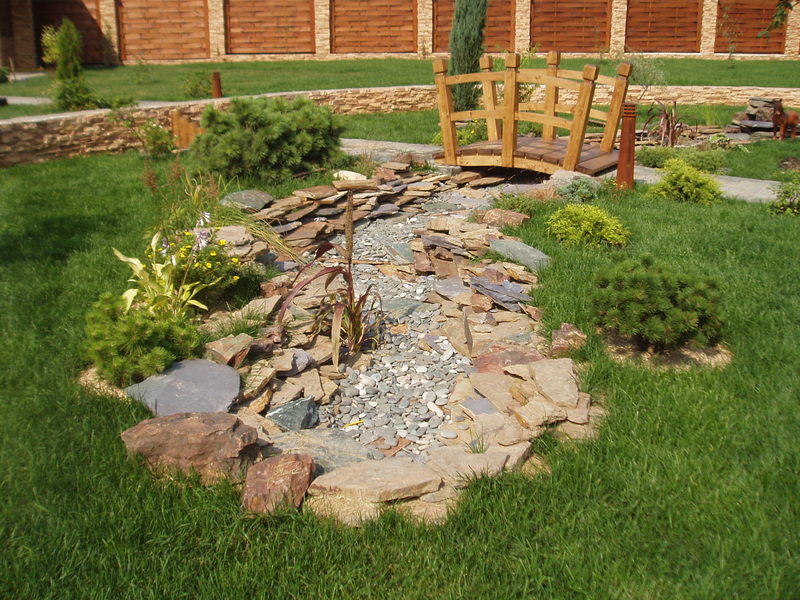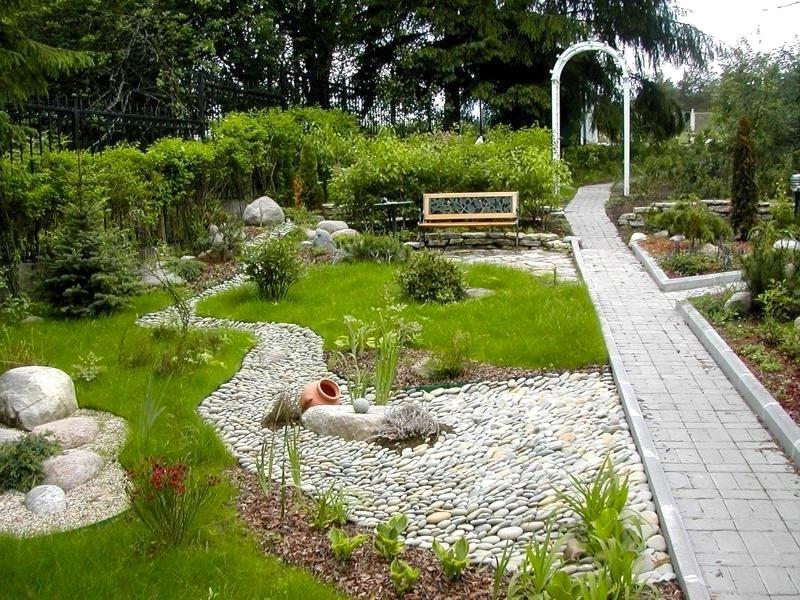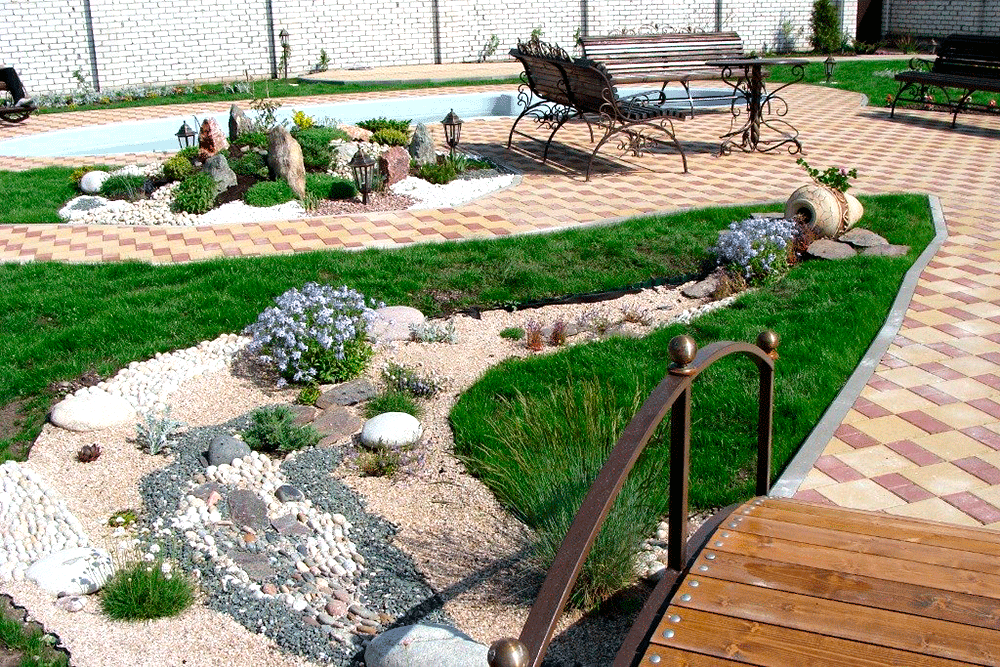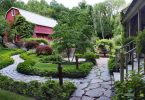How to make a dry stream
In modern landscape design, the creation of dry streams is becoming increasingly popular. This is a pretty beautiful structure; Initially, such streams were popular in Japanese gardens, where it was difficult to use real ones, filled with water. Dry streams look very elegant, it is pleasant to admire them, and the illusion that this is a real stream, that it just dried up before the next rain, makes you think…
Dry Stream Benefits
From the practical point of view, the creation of a dry stream attracts with a decrease in cash costs – there is no need to purchase and install expensive pumps for pumping water. The advantages include the fact that the redevelopment of the terrain will not be required..
Creating a dry stream will also make it easier to deal with uneven terrain. Calling on your imagination to help you, instead of scattered zones of the garden, you can get an eye-pleasing picture, hatches, old stumps and bumps will reliably hide under stones and pebbles.
The creation of a dry stream will not require an invitation to a specialist designer. It will also have a positive effect on the thickness of your wallet. All work can be done by hand. There are no clear rules, forms and boundaries – everything is subject to the creator and his imagination! You just need to remember that the width of the brook should not be the same, it is necessary to make an imitation of a living stream – somewhere wider, somewhere narrower – and natural drops in soil height, if any, can be turned into dried waterfalls…

Stages of construction of a dry stream
The main thing is to determine what contours the future stream will acquire. You can carry out several experimental options, use sand to create several interesting shapes and, comparing the results, choose the most acceptable.
After choosing the shape and location of the stream, you can start earthworks. We dig a “foundation pit” along the selected contour: remove a layer of earth from 15 to 30 cm as needed. The bottom of the structure, in order to prevent the growth of grass, it is advisable to lightly cement it, or cover it with nutrasil, a non-woven polymer material. The next stage is the most interesting: the bottom of the stream needs to be laid out with stones. The choice of material is huge, so you must first determine which color will be preferred..
Stone design
The stones are also very different in size and shape. For example, basalt and slate will create a delicate blue-gray hue, granite will give brown, and if you use limestone, the stream will turn out to be light.
It is better to start work by laying large stones – they will create banks; if the width of the stream permits, then large stones in the middle will look very beautiful – you get the effect of islands. The stream bed is laid out with small pebbles.
Dry plants
By using dry plants that can be placed in a stream, you can get an even greater effect of the similarity of the stream to the real one. Plants are best used those that actually grow in water.
Pampas grass, daylily, willow sunflower, Chinese reed are very good in a dry stream. Plants whose flowers resemble the color of water will look beautiful. Among the recommended ones are creeping tenacious, large-leaved forget-me-not flower, Poskharsky’s bell.












